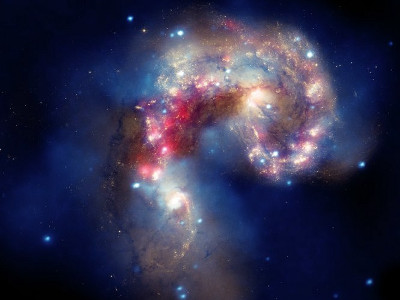A rare "slow motion" case is observed with a supernova explosion where a giant star is reaching its end

ByIvan
When a star with a huge mass exhausts all fuel and finishes his lifeSupernova, Or a general explosion called "supernova explosion". In that case, a dazzling light is emitted for several days, but it is obvious that the star in the place about 1.2 billion light-years away from the earth was causing a super slow motion explosion which can not be seen normally it was done.
A Star Going Supernova In Slow Motion Discovered - Universe Today
https://www.universetoday.com/134879/star-going-supernova-slow-motion-discovered/?utm_content=buffer4699f&utm_medium=social&utm_source=facebook.com&utm_campaign=buffer
This supernova was observed on 11th November 2014 and is given the name "OGLE-2014-SN-13". Projects being promoted mainly by the University of Warsaw in PolandOptical Gravitational Lensing Experiment - Wikipedia, Commonly found in the observation of "OGLE (augle)", this supernova is particularly interesting is that the series of processes has proceeded at a very slow speed rather than what is normally thought .
This supernova is classified as "Ibn type" from composition data which was clarified by observation. Ibn type supernova usually glows shimmer at a stretch in about a week in a short period of time and even after reaching the peak it will fade away brightly at a stroke, but OGLE-2014-SN-13 will start from the first observation How much it took 50 days to reach the peak of brightness. And the subsequent attenuation of brightness was said to be very gentle. Emir Karamehmetoglu of the University of Stockholm, Sweden, who led the research, explains the composition of the star before the explosion as to the interview of the space science related site "Universe Today" as follows.
"Ibn type supernovae are thought to be a case where a star with a dense space of helium explodes around the star with a very large mass.In this time we are analyzing the spectrum of helium We also assumed that there was little hydrogen around the star.Hydrogen is the most abundant element in the universe and is also observed more frequently than helium in spectral analysis It is something to be done, but this situation has not been observed this time. "
The following pictures were compared when the supernova occurred, before explosion (left) and after explosion (right). You can see that the celestial body in the place indicated by the blue circle disappears after the explosion.

The distance from Earth to OGLE - 2014 - SN - 13 is 372 plus or minus 9MegapacekIt is considered to be equivalent to 1,224.6 million light years from 1,183.5 million light-years when this is corrected to light years.
Related Posts:
in Science, Posted by darkhorse_log







